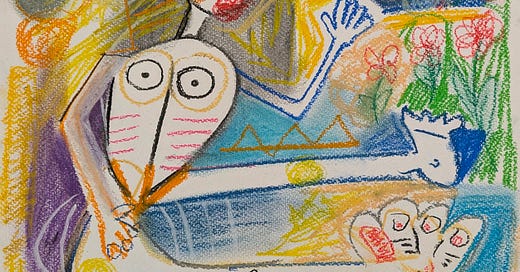I Got Rejected from an Art Sale… and It Taught Me How to Find My True Audience
Turning Rejection into an Opportunity to Refine Your Approach
Yesterday, I had an experience that left me reflecting on the intersection of art, sales, and the skills we need as artists to thrive.
Someone reached out to me, expressing interest in finding artwork for their office. Excited about the opportunity, I quickly shared a few pictures of my paintings and even proposed the option of commissioning a custom piece. Everything seemed promising—until I mentioned the prices. Suddenly, the enthusiasm faded, and the response was, “Maybe next time.”
Rejection is part of the game, and I accept that not every interested person will become a buyer. But this situation got me thinking:
Are artists supposed to be good at sales?
Should we learn skills beyond our creative craft to navigate these interactions better?
As artists, we pour our hearts into creating pieces that reflect our vision and, hopefully, resonate with others. But pricing our work often feels like a balancing act between honoring its value and understanding the market. When someone declines after hearing the price, it’s easy to second-guess: Is it too high? Should I offer discounts? Should I have framed it differently?
What I’ve realized is this: selling art isn’t just about sales skills—it’s about alignment.
Here are a few key reflections from this experience:
1. Rejection Doesn’t Define Your Value
Art is personal, and so is the decision to invest in it. When someone pulls back, it’s rarely about you or the quality of your work. It’s about their budget, their priorities, or simply timing. Rejection doesn’t mean your work isn’t worth the price; it just means it wasn’t the right match.
2. Rejection Helps You Align with Your True Audience
When someone walks away, it’s an opportunity to ask yourself: Am I targeting the right audience? Not everyone will appreciate the time, skill, and creativity that goes into a piece of art—and that’s okay. The right buyers will see the value without needing convincing. Rejection helps you fine-tune where and how to find them.
3. Selling Art Isn’t About Being a Salesperson
Many artists, myself included, didn’t sign up to be salespeople. Yet, in today’s world, sharing and promoting your work is part of the journey. Instead of thinking about sales as persuasion, think of it as connection—finding people who resonate with your vision and value what you bring to the table.
4. Rejection Can Refine How You Communicate Value
Sometimes, rejection happens because the potential buyer doesn’t fully understand what they’re investing in. Are your pricing, process, and the story behind your art clear? Use these moments to refine how you present your work—whether it’s through better visuals, storytelling, or making your creative process more accessible.
5. Rejection Builds Resilience
Every "no" makes us stronger, more aware, and more confident in our work. Rejection is a chance to step back, take stock of what’s working, and adjust your approach. It’s also a reminder that success in art isn’t about pleasing everyone—it’s about connecting deeply with the right people.
My Takeaway
Rejection is inevitable, but it doesn’t have to be discouraging. Instead, it can be the spark that helps us grow, refine our craft, and connect with the audience that truly values what we create. The next time someone says, “Maybe next time,” I’ll take it as an invitation to keep evolving—not just as an artist, but as a storyteller and connector.
How do you handle rejection? Has it shaped your process or the way you approach your audience? I’d love to hear your thoughts.
ig: sabela_garcia_cuesta
www.sabela.art




